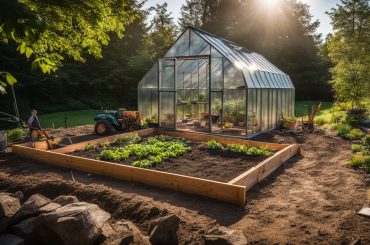Table of Contents
Are you looking for creative ideas to enhance the growth of your plants? Now look no further because here in this article, we guide you through one of the most important processes to keep your plant healthy and happy. You must know several processes to maintain your plant, including watering, pruning, and re-potting.
Several plants like Monstera need re-potting because of several reasons. Re-potting Monstera will help it grow easily with enhanced space. In addition, it helps add new soil with rich nutrients, which ultimately benefits the roots. Now reading about these benefits of re-potting, a question must be lingering in your mind- When to Re-pot Monstera? Then, keep following this guide to know all about how and When to Re-pot Monstera?
About Monstera Plants and The Need for Re-Potting

As a plant enthusiast, it is normal to keep looking for appealing and aesthetic plants that enhance the beauty of your place. And Monstera is an ideal option for the same. Because of its unique beauty and easy maintenance features, the plant has been gaining quite an attention from gardeners all across the globe.
What makes them more unique is that you may plant them indoors in your living area or dining room or in your outdoor areas like balconies or gardens.
Monstera is originally native to America. However, with the right conditions provided, they are now being grown in all areas worldwide. There are several varieties of Monstera which allow individuals to pick their favourite one to decorate their house. Some of the most notable varieties include Dubia, Hurricane, Mini Monstera, and so on.
Now while planting Monstera, several conditions must be present to ease its growth. Some of these factors include the availability of sunlight, good drainage soil, and humid settings. To further facilitate their rapid growth, re-potting is essential as well.
Monstera is plants known as fast growers; in that case, re-potting Monstera provides them with bigger space to grow without any hindrance. In addition, it also helps avoid the conditions of damaging the roots because of waterlogging. It won’t be wrong to say that your plant breathes better with re-potting.
When to Re-pot Monstera Plant?
It is always said that your plant speaks what it needs; you just need to be a little bit attentive to it. So why not? As a plant guardian, it is your responsibility to listen to your Monstera at the right time when it is giving signs. Doing so will help prevent all kinds of adversaries and boost its growth.
Here are some signs your Monstera may reveal to let you know When to Re-pot Monstera.
1. Overflowing/ Exaggerated Roots
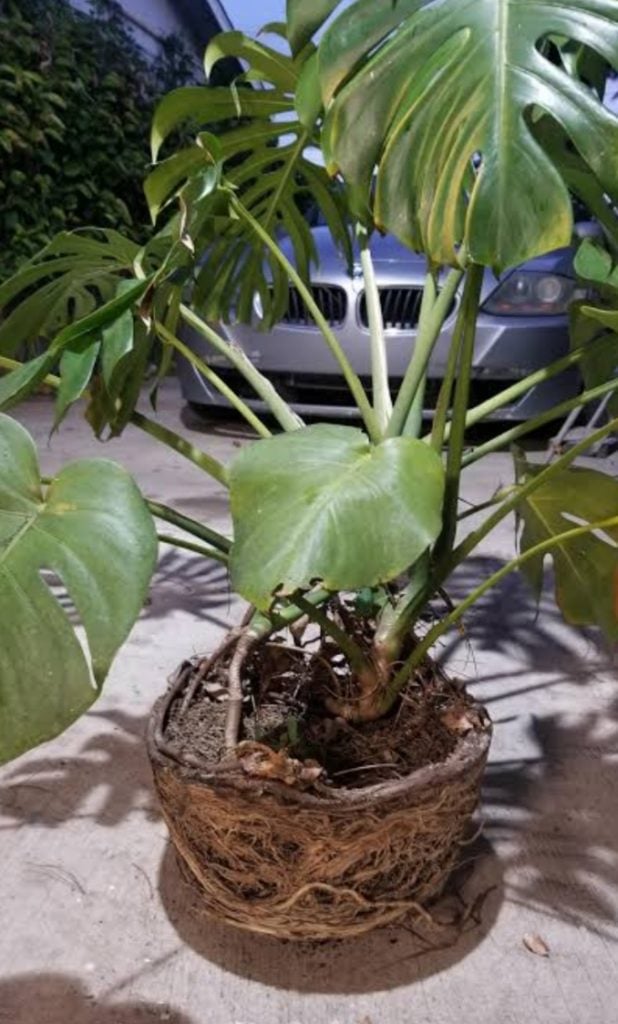
This is one of the most easily visible and prominent signs to tell that your Monstera needs re-potting. You simply need to check your pot and see if any overgrown roots are peeking out of the drainage holes of your container. If yes, then it is time to report Monstera.
With outgrown roots, you should consider re-potting the plant in a bigger container allowing its roots to spread accordingly. Additionally, you can also consider pruning the roots.
2. Unusual Water Retention Capacity
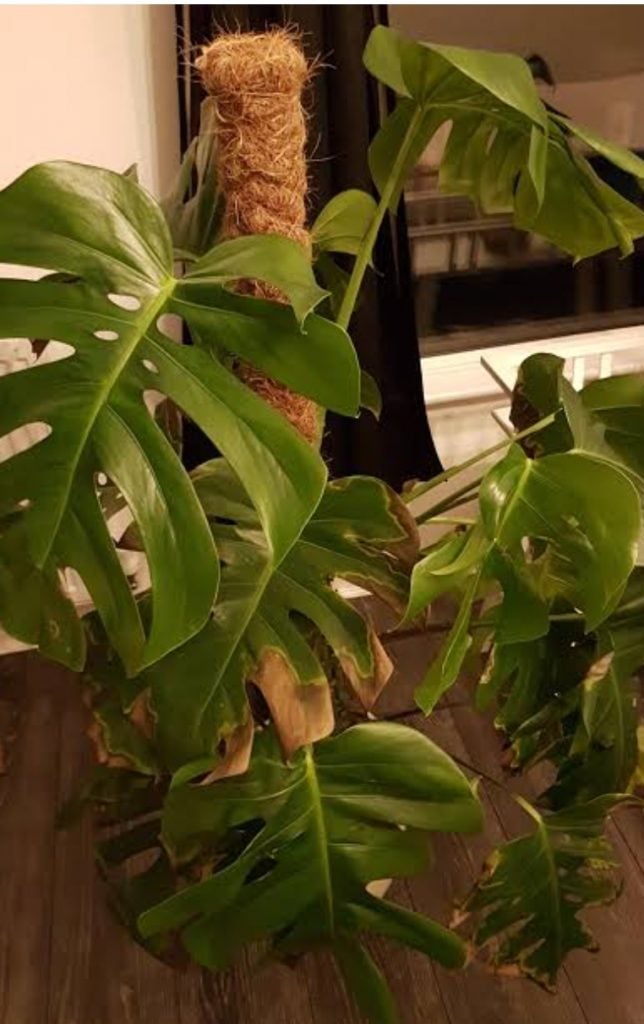
This is another alarming sign that your Monstera may be giving you. If you feel that your plant is not soaking or demanding water as it used to, then it’s an indication to re-pot your plant.
It’s a sign that you should consider inspecting your plant’s roots. Sometimes you can see overgrown roots; such growth in a limited space leaves no room for the water to be filled in. And thus, the roots absorb no water, which ultimately needs to be observed by the soil for the Monstera’s growth.
3. Hindered or Slow Growth
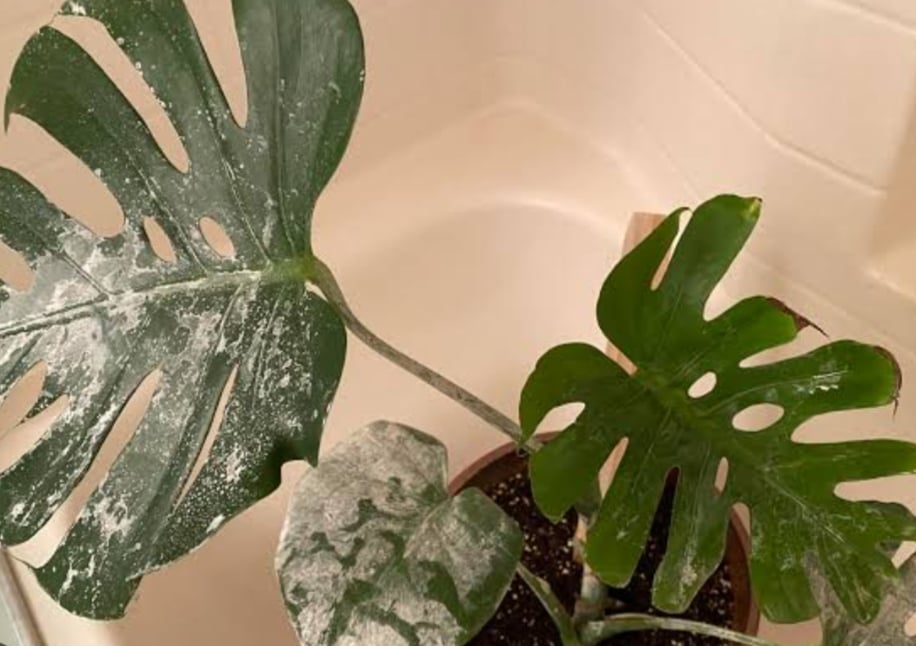
There are several reasons why the growth of Monstera is hindered at times. The reasons may vary from the unavailability of suitable cultural conditions like sunlight and water to the need for re-potting.
If you can see that roots are tangled and need more soil and space, then you need to re-pot your Monstera into a new container.
While providing it with enough space, you also need to keep the new pot at the location where it was placed earlier to ensure the plant doesn’t get stressed and is familiar with the environment. By doing so, you can see new growth in your Monstera.
4. Standard Time Has Come
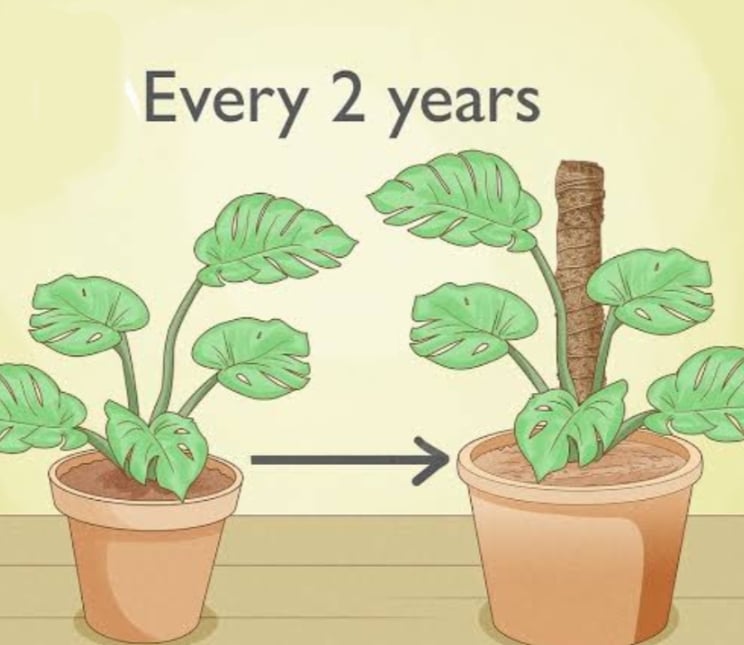
With every plant, there are some specifications and requirements that need to be fulfilled at all costs. Re-potting your plant every two years is one such requirement for growing Monstera.
This need for re-potting may slightly differ for young plants. However, with Mature Monstera, re-potting every two years is counted as a ground rule.
How to Re-Pot Monstera Plant (Step-By-Step Guide)
Here, we are clear with the advantages of when to re-pot Monstera, but knowing how to re-pot is equally important. Before we go any further on the process, make sure you have all the must-have re-potting essentials accessible to you.
Equipment Required:
Now After Collecting All These Essentials, Let Us Proceed Further:
- Choosing a pot of a suitable size is the most important task while re-potting Monstera. Consider going for a size above your earlier pot so the roots and plant can accommodate well in the new container. Also, make sure to check if the pot is built with drainage holes. Such designed pots allow the roots to breathe and also prevent the conditions of waterlogging.
- The next step should be moistening the soil of your existing potted plant to ease the transfer. While transferring the plant, make sure to hold the plant gently.
- After removing the plant from the old container, it’s likely to notice that the roots of your Monstera are tangled. In that scenario, untangle them so that they can expand easily.
- You can also consider pruning the roots in the next step. Not only will it help contain their overgrown, but it will also make your plant and container more tidy. You can use trimming scissors or pruning shears for the same.
- Loosen the new soil using the correct tools like a spade, gardening forks, and more. You can also consider using solutions like peat moss to improve its quality. Now carefully pot your Monstera in the new container while keeping its roots gathered. Your last step should be adequately watering your plant. This will root to adjust. Also, make sure to position your plant at the same site where it was positioned earlier so they feel familiar. Finally, inspect them carefully for a few days to witness the new growth.
Common Problems While Re-potting Monstera
Monstera Plants are quite easy to maintain. However, they are not immune to adversaries, and problems may occur. This makes it important for you to understand the kinds of problems your plant may witness, so you can be readily prepared to avoid them.
1. Changed the Colour of Leaves
This is one of the most common problems occurring with these houseplants. The changed colour of leaves indicates a certain kind of stress. Follow the table below to understand the causes and solutions for the same.
|
Changed Colour |
Reason |
Solution |
|
Leaves turning black |
Over or under-watering root problems |
Inspection of roots and removal of damaged ones, and re-potting the plant |
|
Leaves turning brown |
Unavailability of adequate moisture, watering problems |
Improving the moisture content of the soil |
|
Leaves turning yellow |
Lack of proper sunlight, overwatering |
Providing suitable access to sunlight and water |
2. Wilting Leaves
This is one other common problem faced by Monstera that showcases the absence of suitable environmental conditions.
Not getting proper hydration or nutrient-deficient soil can lead to such problems.
Consider improving your watering schedule, and you may use a soil mix to improve your soil quality.
3. Fungal Disease or Bacterial Contact
Bacterial growth, mites, and more are some of the most common diseases your plant faces. These problems can hinder the growth of Monstera.
In such circumstances, it is advised to use suitable pest control solutions. Improving the watering schedule is important as well.
4. Improper Growth of The Plant and Its Leaves
Monstera is known for its beauty, and not witnessing the same because of the stunted growth of its leaves can be quite frustrating.
The growth of your plant can be affected in the absence of suitable cultural conditions like sunlight and water.
Sometimes problems like root bound could affect the plant’s growth. I’m such cases, one should know when to re-pot Monstera.
Conclusion
It is quite natural for a plant owner to want your houseplant to be happy and healthy; re-potting is an easy way to ensure the same.
Knowing when to re-pot Monstera can enhance your plant’s beauty and growth and help avoid several health adversaries. In this article, we tried to help you understand the alarming signs for re-potting and the easy way. If you’d like to read more about houseplants, and tips for their growth and nurture, keep following us.
So, are you ready to re-pot your Monstera? Drop the comments below and let us know how well it goes.
Frequently Asked Questions
What Is the Best Time to Re-Pot a Monstera?
The best time to re-pot a Monstera is every two years. However, in cases of fast growth and root expansion, you may keep checking up on the plant to know about the same.
What Is the Best Soil to Re-Pot Monstera?
The best soil to re-pot Monstera is the one with good acidic content. Also, consider loosening your soil and using a suitable mix or compost to improve its fertility.
What to Re-Pot Monstera In?
A Monstera can be re-potted in a container or pot of suitable size, which shall be 3-4 inches bigger than the earlier pot.





